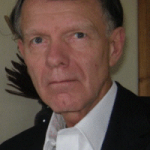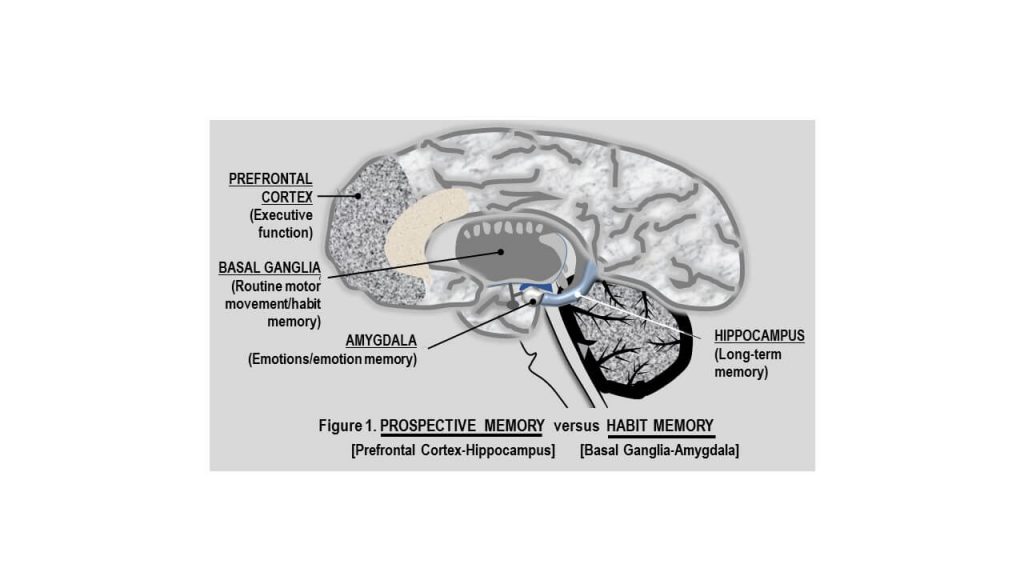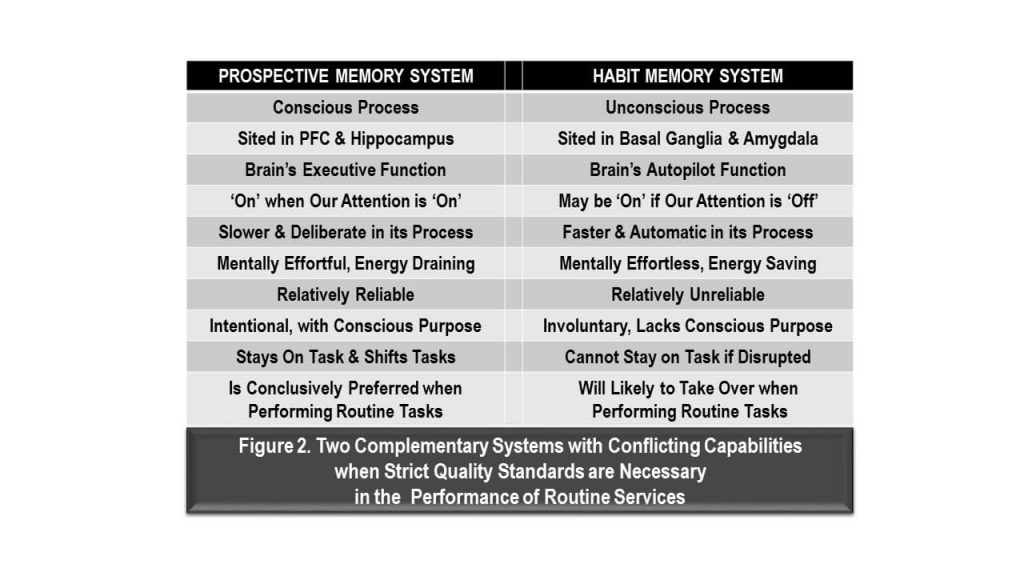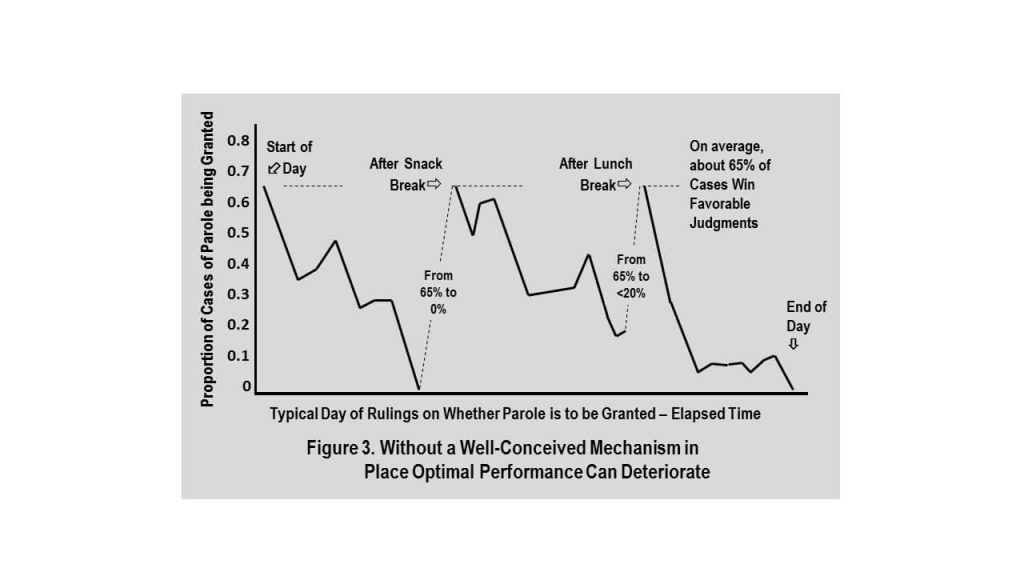 Introduction: Men and women providing various professional services sense when they’re in a performance rut. Where it feels as though the days all bleed into a single repetition of the same run-of-the-mill cloud of experiences: a workplace rendition of déjà vu gone live the moment they step through the door. Makes it exasperating at times, just to stay focused.
Introduction: Men and women providing various professional services sense when they’re in a performance rut. Where it feels as though the days all bleed into a single repetition of the same run-of-the-mill cloud of experiences: a workplace rendition of déjà vu gone live the moment they step through the door. Makes it exasperating at times, just to stay focused.
Maybe they catch themselves daydreaming more often in the middle of a routine procedure. Or getting easily distracted by the goings-on all around them, making it infuriating and hard to stay on task at times. Or worse, they get disrupted by an urgent request, or discussion with a coworker, only to return to their current task, irksomely lost over where they’d left off. As if these occurrences weren’t vexing enough, it later becomes clear that they’ve inadvertently caused an error. A blunder at the worst possible time. A costly one at that.
If those frightful examples touch upon a familiar psychological sore spot, fret not, for you’re not alone. Your misery has company—and in the hundreds of thousands, no less. The root problem is not about you per se, nor your work habits, nor the profession you practice each and every day. It’s about a longstanding human-brain function issue and there are workarounds to ridding its dominance over the daily routine of service provision.
The Human Brain in General
Also true for manufacturing environments, the human brain doesn’t always function according to our best interests where routine tasks are concerned. What makes this situation doubly critical for any professional in the performance of a service, is that missteps and numerous other errors can pose tremendous and horrific human costs. So, the human brain does indeed have skin in the game for these individuals in particular.
Especially considering that, at any given moment the health and normal functioning of our various internal life support systems—that we nonchalantly take for granted—keep the brain busy working nonstop: making roughly 10 quadrillion calculations every second and firing on about 66 watts. The brain’s unconscious regions are working at lightning speed behind any scene, any event, playing out before our eyes, and attempting to expend the least energy at that.
Without any conscious attempt, this brain of ours is singularly fixated on achieving astonishing efficiency while allocating minimum effort towards leveraging a normal functioning equilibrium from head to toe. Permitting the pun: it’s so efficiency-headstrong that it relies heavily on high-speed ‘interpretation-shortcuts’ to making sense of stimuli in our external surroundings; what’s called heuristics. In order to accomplish so much, and on different levels of concurrent human functioning, it divides its labor across different sections of the cortex and a number of substructures housed at center and just below the brain itself; referring to what be colloquially think of as our two minds, the conscious and unconscious.

Figure 1 illustrates those regions of the brain relating to routine performance. When first learning any task our so-called executive function is in charge; that’s the nickname given to the prefrontal cortex (PFC), which is located just behind the forehead. Executive function operates from our brain’s conscious side. It more than earns its nickname since it handles attention-demanding functions such as attending to, staying on, and shifting tasks. It’s where we organize, plan, form our immediate and future intentions, and set goals. Where we make judgments, decisions, evaluate actions, and perform abstract thinking, such as logic and reasoning. Also from this sole site is where our motivations get aroused. And where we draw upon short-term, aka working memory. And finally, this conscious side of our brain keeps us socially acceptable as it’s also where we’re able to exert control over undesirable impulses. [Any function performed outside the PFC is more or less unaware to us, thus from our unconscious side.]
Two Complementary, but also Conflicting, Memory Systems Clashing in Our Work World
So, the PFC—or Executive Row—as some prefer—houses all the top brass responsible for carrying out the functions that make up who we are. That is, the mannerisms it displays form the personal traits that make up our personality, the ‘I/me.’ Returning momentarily to the planning and organizing functions: they oftentimes need to turn to long-term memory for details, thus are neurologically linked to the brain’s Hippocampus; coupling it with the PFC, this pair then takes charge over all near- and long-term intended endeavors. Which is why neurologists, psychologists, and others refer to this duo as the prospective memory system.
It’s fortunate that the cortex evolved later in mammalians, and then with primates and us, because nature had already found a convenient way to hand off some of the labor: each time we learn some new life routine, and then go through repeated trials of executing it, those repetitions are getting ‘etched’ in the brain’s basal ganglia (BG) as well. BG is an primordial workhorse, a structure responsible for executing all repetitious motor functions.
As examples of its considerable reach of involvement in our daily lives, the unconscious mind’s BG take over when we: perform a routine service at work, drive the same route to/from work, tie our shoes, ride a bicycle, hum or sing a favorite tune, run a familiar errand, give a speech, or get highly stressed out by a troubling incident at work (fight or flight response). Along with another brain structure, the amygdala, the pair make up the brain’s habit memory system.
Behavior driven by habit memory is mostly unconscious, accomplished outside the PFC, as just said, thus receiving only token attention from us. For instance, we don’t have to consciously focus on taking a step forward, first with our left foot, then our right, then our left, again, and so on. Recall times driving to and from work when you’re suddenly at your destination, but can’t recall the details of the actual drive itself. That’s an example of your BG in control to the point of arrival; then your conscious PFC regaining attentional control. But then having no recollection of the actual details of the drive. Unconsciously, you’d driven n miles from point-A to point-B, fortunately without incident.
But of course there’s a rub: these two systems do not link together; neither is aware of, nor ‘speaks,’ to the other. Each has no recollection of the other. Also, an earlier reference to high stress at work was made, about it being habit-memory triggering: that’s the brain’s amygdala at work. It’s the storehouse for emotional memories and emotional arousal. It more or less aligns with the BG to complete the habit memory system, inasmuch as it will trigger automatically the fight-or-flight response under high-stress conditions: we don’t have to consciously think about acting. We just act.
Routine Service Ruts: The Two Clashing Memory Systems’ Implications
Based on what’s just been just laid down, means our executive row likely isn’t in charge when performing routine services. Only if something unusual occurs, stirring our attention, will our PFC retake command. [I’ve observed physicians in consultations enough to see how ‘deliberate’ their mannerisms are; they’re the possible exception. They’re trained themselves to stay laser focused; suppressing the habit memory from taking over.] However, more than we care to admit, the habit memory system is in command across a majority of professions.
However trite the water-cooler jokes about daydreaming-on-the-job may be, they point directly to this issue. Similarly, both friendly and snide comments about operating on ‘autopilot’ thus prove to be more literal than figurative, it turns out. Because both are telltale signs of habit-memory hijacking the focused mind of an unsuspecting service professional.
As obvious as it surely is by now, the problem with routine service performance is that we’re threatened with not giving 100% attention-effort-effectiveness—The Big 3—to the routine task at hand. Our work focus may be token at best. Moreover, we’re easier prey to distractions and interruptions. Both of these two common work disruptions frequently lead to human error. For example, when working from habit memory, if distracted by a coworker, our prospective memory system (PFC) kicks in. We’re alert and attentive to whatever issue’s been raised. Yet when we return to a task (if we’d been performing from habit memory) our conscious mind hasn’t a clue about where we’d left off. Figure 2 highlights the opposing distinctions between these two usually complementary, but sometimes conflicting, memory systems.

When a service warrants a high level of focus—yet drifts into autopilot mode for the unwittingly performer—it’s easy to imagine the fallout that might ensue: missed details, shoddy work overall, a step and/or a service feature omitted, and so on. The implication readers should draw from staying ever-focused is this: by staying focused for an entire workday requires professional staff to take actual rest-breaks and lunches in order to fully mentally recharge. Maintaining a focused mind—avoiding habit memory as a restful fallback altogether—will drain both concentration and effort. Yet both are what customers have a right to expect; as do employers, for that matter.
In summary, that’s the gruesome news: the frequent victor of two competing brain regions during routine work often renders such work mediocre at best; potentially error-ridden and harmful at worst. If physicians do indeed achieve it, how do we preserve a focused mind? Can habit memory even be suppressed?
A Way Out of the Service Rut Morass
The short answer to the last question is ‘yes.’ Most professional services settings fail to hone in on their customers’ personal parameters: that is, idiosyncratic needs relating to the quality of a service experience as defined by an individual customer—be they patron, consumer, user, or client. Instead of one (general) service presumably suitable for all customers, the astute service performer becomes more highly engaged, more focused-mind (mindful just doesn’t cut it), by integrating their customer’s inputs into personalizing a service. This action, alone, sets them apart from their peers. Typically, in middling professional settings specific customer needs and wants are habitually neglected.
‘Parameters’ include those anatomical, behavioral, biological, mental, and physical (abbmp) features of a service that are related to that service. That can directly impact how well that service fits with the way it is experienced by a customer; said differently, we’re talking about the quality of a service’s output. Depending on the type of service rendered and its context, the quality of the customer’s experience may also directly or indirectly improve the immediate, middle-, and/or long-term outcome that the service is expected to produce.
As a brief example, a mind-focused dentist takes note of certain dental patients’ needs that aren’t being fulfilled under general practice. So, his clinic now offers a range of sedations so that patients who experience dental anxiety/phobia (m–mental, of abbmp parameters) can get through their ordeal with far less trepidation. Finally, a customer’s prior history with a service is another possible factor in the list of parameters.
Strategy for Staying Clear of the Rut Routine: Optimizing Customer Experience
What was just outlined above is referred to as optimizing the service experience for one’s customers. Figure 3, below, starkly illustrates why an optimization strategy is not only conducive to averting routine-service ruts, it’s paramount for preventing performance creep; aka drift. For those who don’t recognize the term, it refers to a condition of decaying or eroding performance to a point of inferiority; where, over time, without measures to stop its gradual process, routine performance can degrade until it hardly resembles its former level of value. Creep is the reason why some professions require periodic recertification or requalification.

In Figure 3 is depicted an Israeli study of eight judges over a ten-month period, covering 1,112 parole hearings, where judges assumed their performance never dipped below baseline for delivering fair and just decisions on granting parole. The baseline level for prisoners getting a ‘fair and just’ decision was found to be at 65% probability of winning a favorable decision. Yet, in reality, over years of such hearings, as time wore on each day, chances for parole dropped dramatically right up till the judges’ morning-snack, and once again up to the noon-lunch break.
None of the judges was aware that their routine performance decayed significantly over time. Nor that they’d recover their former baseline once they’d rested from the tedium of hearing a litany of arguments for granting parole. They were being highly attentive at the start—their prospective memory fully engaged. But at a later point their court hearing routine drifted into its familiar ‘autopilot listening’ state (habit memory takeover), which clearly was not about maintaining a focused-mind on screening and evaluating for ‘fair and just’ as lawyers argued on behalf of their clients.
Devilish About Details: Integrating Customer Voice into Every Service Task
The premise of this paper is about self-development. About training one’s executive row to make mind-focused attention and intent-to-optimize its priorities.
In order to stay-on-task (focused-mind), we ask our customer a series of service-optimizing (SO) questions. Before getting to them, because service professions and their contexts vary widely, there are a few core assumptions that have to be validated by readers in their respective professions in order for the strategy proposed to succeed as was designed:
(a) customers can speak, are relatively coherent, and are allowed to speak to the performer while service is rendered;
(b) the service is performed ‘live’ and in real-time; and
(c) customers are relatively insightful and articulate about themselves (with appropriate facilitation, as needed, coming from the performer).
Listed next is the order of SO Questions put to a customer. Not all of three possible target performances will be germane for some professions:
1. [Service performer clarifies for him-/herself exactly what the Target performance will be:] What is the target (‘T’) of my focus with this task? [See info-box below.]
‘T’— the germane object upon which a service is directly performed. No matter the service or profession, there’s only 3 things we can do to any customer—apply some thing, say something, or supply some thing. ‘T’ is therefore either something:
– a physical matter applied to a part of customer’s anatomy, or
– said to a single customer, or a customer group, or
– a physical object supplied to a customer.
Examples: handing a document over (supplied) to customer; putting a cast (applied) on a patient’s mended leg; giving business advice (said) to a client audience of company managers; and filling in fields on an electronic eligibility form for obtaining agency service while interviewing (said to) a potential client.
2. How can ‘T’ be personalized to OPTIMALLY suit this customer?
Frame this question to your customer in a way that best elicits a well thought-out, specific response from them. They may need to know more about how the task is generally performed. Explain clearly so they’ll visualize it being done. They’ll then supply insight for personalizing the task to best fit their situation. If their request is unallowable, explain why. Additionally, based on your level of accrued experience with optimizing a service, suggest any feature or alteration to the service you think will make the fit most optimal. Examples of customer parameters to pursue with additional questions, as they may be highly relevant to service being offered: customer perception of service, prior history with the service, and individual differences by gender/education/abbmp, etc. After questions are ended, merge their input with your newly-gleaned knowledge to derive an SO rationale that best suits customer’s interests.
3. How will I do this service differently?
You actually just formulated the answer; by asking it of yourself focuses your mind on just how, serially and so on, you intend to perform it in detail.
Taking heed that service context can shape how well a service gets performed: thoughtful application of the three SO questions will induce higher engagement of service performer (you) and customer alike; moreover, it compels a service performer to stay prospective-memory focused. Not drift into habit-memory routines anymore. With respect to the world you work in, the upshot is this: this approach depends on professionals being (a) empowered to make personalized adjustments to the services they perform, and (b) have a clear sense of service boundaries: that is, where said adjustments become unallowable. And so, finding a middle ground is the best action in such cases for both them and their customer, going forward.
Looking closer at how a customer may actually specify optimal experience of ‘T’ in a service underway, for illustration the examples from Q#1’s info-box are expanded here:
– Handing a document (supplied) to customer – let’s say the document is a set of instructions, 10 pages in length. Customer says “I just want the highlights.” Service performer then verbally supplies the high points, caveats, and most salient instructions rather than recite the entire list.
– Putting a cast on (applied to) a patient’s broken leg – Patient says, “This has happened before. I know about keeping the leg elevated, but can you do something to make it itch less?” The technician reminds the patient that elevated means at a level higher-than-the-heart, and then suggests use of a portable hair dryer. S/he explains how aiming it directly inside a gap between leg and cast at a section itching most, dries both leg and inside of cast, relieving itch severity.
– Giving business advice (said) to a client audience of company managers – They say, “What you’ve recommended so far, we can do. But what about how frontline staff keep complaining that we’re not in touch with our customers like they are?” The consultant suggests that all frontline staff be asked to carry a notepad. That they take notes on customer complaints, insights, wishes, and compliments; then add their own thoughts to what they’ve gathered. Frontline staff are to then organize their notes and, in small groups of not more than 5 staff—using scheduled one-hour sessions—report to their manager(s) what they’ve learned and what they recommend. The consultant explains that both customer voice and staff insights are usually quite informing. And once they’re integrated, will accentuate those actions needed to fill the current ‘out of touch’ void that frontline staff contend has been apparent.
– Filling in fields on an electronic eligibility form for obtaining agency service while interviewing (said to) a potential client – Applicant says, “We’ve got, you know, circumstances that might prevent your agency from qualifying us. We really need to qualify. Can you not be as strict, or to the letter, is basically what we’re wondering?” The service representative then advises them that (a) based on certain answers given, there are follow-up questions designed to accommodate such instances; and (b) the applicants will also be asked, point blank, at the end of the form’s completion if there are extenuating circumstances they want included, word for word, in the application.
Conclusion:
Over time, adopters of the SO Framework will find that an optimization approach with each customer is a more satisfying one. It stresses human contact and excellent service experience for customers. It will inspire self-development in related areas as well: getting well-versed in active listening skills, including effective use of open-ended questions (capturing richer detail), and other techniques for drawing out salient customer inputs that help clarify individual-specific and relevant parameters that better inform how a service experience could be personalized.
In short, as is always true of significant change: when one door closes—in this instance, the door to routine performance—another door opens—a whole new set of challenges promoting professional growth towards the provision of an optimal approach to how one performs their work. Where 100% attention-effort-effectiveness—The Big 3—become one’s new routine.
________________
Benjamin Ruark’s first career was in behavior therapy. After earning a second masters, he became an instructional technology specialist/consultant to manufacturing, professional service industries, and software producers–both domestically and in the UK.
References:
Anonymous. (2020). Human brain, neuroscience, cognitive science. Basic Knowledge (BK) 101, online tutorial. Retrieved /12/10/2020 from: https://basicknowledge101.com/subjects/brain.html
Anonymous. (2020) Prospective memory. Wikipedia.org coverage. Retrieved 12/10/2020 from: https://en.wikipedia.org/wiki/Prospective_memory#:~:text=Prospective%20memory%20is%20a%20form,life%2Dor%2Ddeath%20situations.
Anonymous. (2020). Prefrontal cortex. Good Therapy.org site. Retrieved 12/10/2020 from: https://www.goodtherapy.org/blog/psychpedia/prefrontal-cortex
Yong, E. (2011). Justice is served, but more so after lunch: how food-breaks sway the decisions of judges. Discover Magazine. April 11, 2011. Retrieved 12/10/2020 from: https://www.discoverymagazine.com/the-sciences/justice-is-served-but-more-so-after-lunch-how-food-breaks-sway-the-decisions-of-judges
Lay discussion on habit memory v. prospective memory systems is unavailable; oddly, it is only sporadically touched upon in highly-esoteric scientific research literature. For lay people, two news articles on forgotten baby syndrome directly reference the clashing systems, as described in this article, offered as further evidence offered below:
Lightman, H.I. (2019). We can prevent “forgotten baby syndrome.” Orthodox Union online newsletter, ou.org. Retrieved 12/10/2020 from: https://www.ou.org/life/health/we-can-prevent-forgotten-baby-syndrome/
Mckenzie, V. (2018). Memory’s surprising role in child death trials. The Crime Report. August 21, 2018, thecrimereport.org. Retrieved 12/10/2020 from: https://thecrimereport.org/2018/08/21/when-forgetting-kills-a-child/